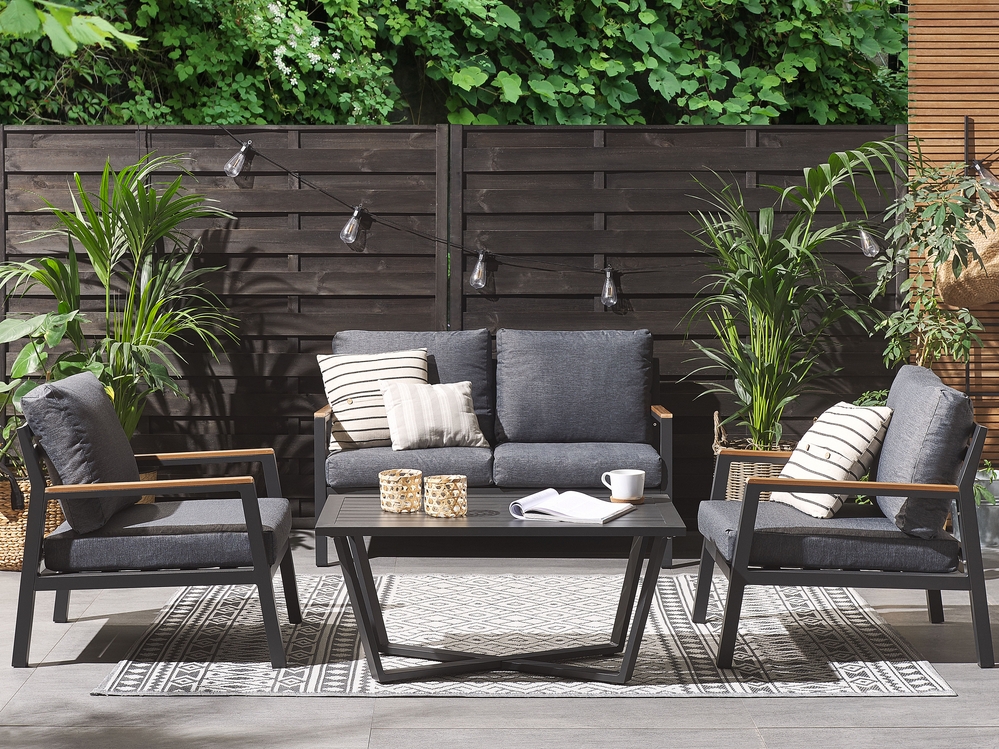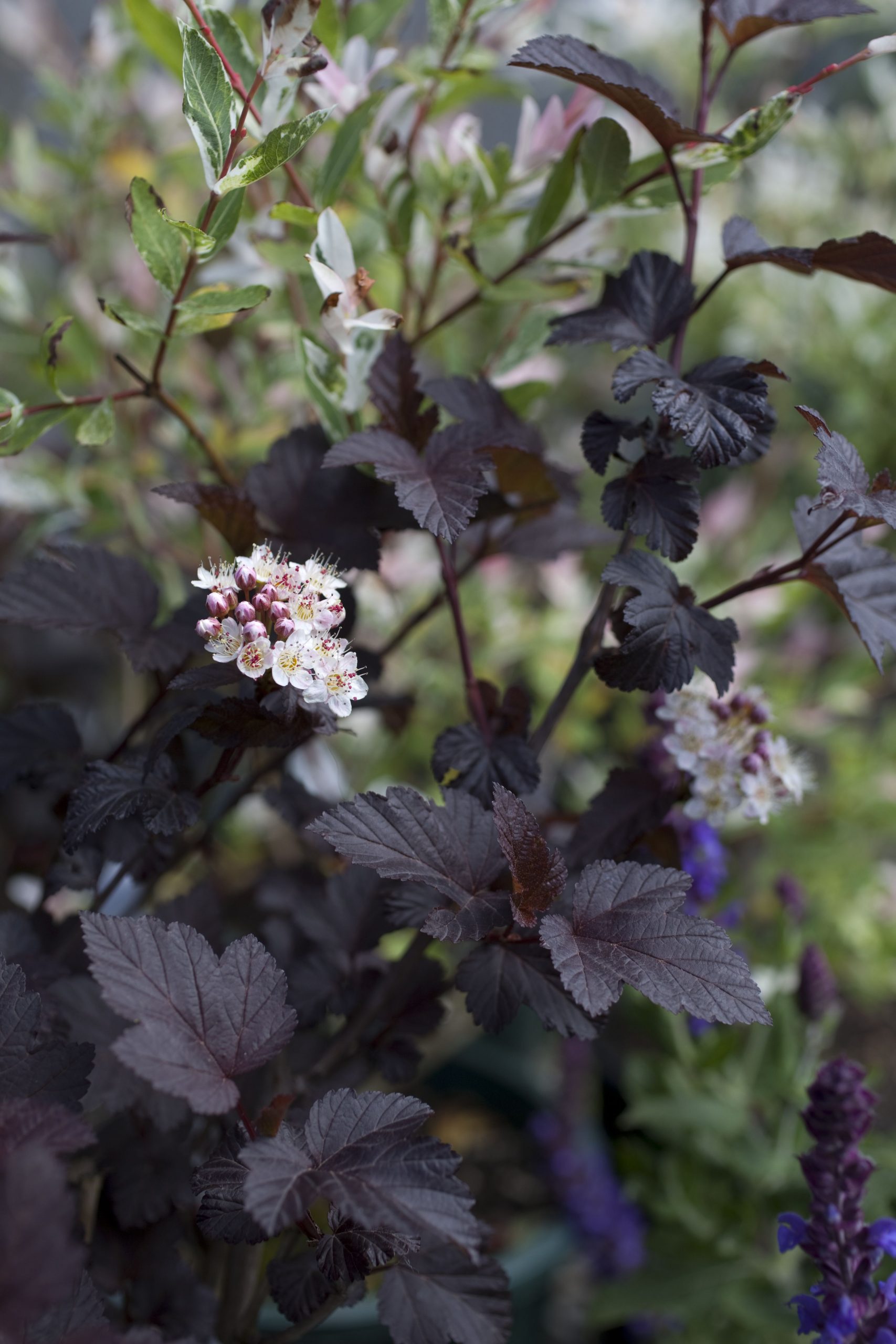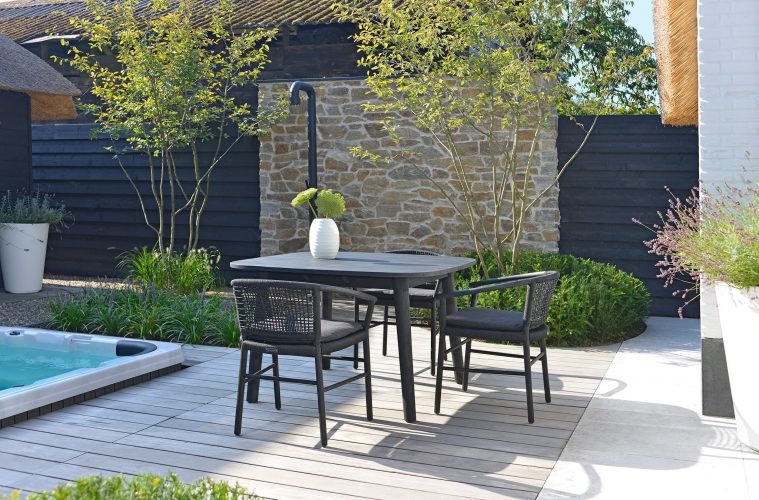Dark hues can be just as impactful in the garden when used efficiently.
When designing a garden, colour is an important component to consider and one of the most exciting design elements to play with. Much like interior designers contemplate colour extensively for any room, we can use the same principles of colour in design to craft the ideal outdoor space.
Traditionally, many gardeners gravitate towards colours that are bright and lively. Sunlit yellows create beds that remind us of summer days, passionate reds add a sense of mystery, and fresh greens provide a calming backdrop to the pops of colour.
These shades undoubtedly have their place, but they are not the only options. Ranging from deep purples to rich browns and charcoal greys, dark colour palettes can become the stars of a dramatic and sophisticated garden design.
Despite fears of losing vibrancy in your outdoor space, a garden can actually be illuminated by the strategic use of dark colours. They bring depth, contrast, and a certain elegance that’s hard to replicate with brighter tones. Darker hues can make a small garden seem larger, create intimate spaces in vast landscapes, or even act as a canvas against which every other colour can shine brighter.

Pexels
Don’t be afraid of the dark side
Dark hues have the power to create an atmosphere distinct from the traditional colours you often see in gardens. One of the standout benefits is their ability to instantly infuse drama into any setting. Modern garden designs, which often feature monochromatic colour schemes, are easy to curate with a palette of dark colours. These shades lend themselves to a sleek, contemporary look, especially when paired with modern furniture and other garden elements.
Beyond aesthetics, dark colours serve a functional purpose too. They act as a neutral base, allowing other elements in the garden to truly shine.
For example, a pathway of deep charcoal grey can make the surrounding greenery appear even more vibrant, accentuating the visual benefits of each plant. This contrast, whether it’s a bright flower against a dark backdrop, or a light ornament on a dark-hued patio, captures attention and elevates the overall appeal of the garden.
READ MORE: ADD A TOUCH OF BARBIECORE TO YOUR HOME WITH THESE PINK HOUSEPLANTS
Ways to use dark colours
Outdoor paint
One of the most straightforward ways to introduce dark colours into your garden is by using outdoor paint. Whether it’s painting a garden wall, fence, shed, or even the exterior of your home, a dark shade can provide a striking contrast to lush greenery.
Colours such as charcoal, deep navy, or even a rich forest green can act as an elegant backdrop, highlighting the colours of the plants and flowers.
Outdoor furniture
Your choice of garden furniture can also be a canvas for dark colours. Consider curating or creating things such as dark-coloured benches, tables, or chairs.
Not only do they exude a modern and sophisticated feel, but they’re also less prone to showing dirt or wear over time. Positioning this furniture amidst your garden creates pockets of visual interest, drawing the eye and inviting visitors to sit and enjoy.
Soft furnishings
Soft furnishings, from outdoor cushions to rugs and throws, are an easier way to add a touch of darker colour that you can swap out if you don’t want to commit to big changes. Incorporating dark colours in these elements also adds layers of texture and comfort to your garden. This is also ideal if you use dark colours inside your home, making your outdoor space feel more like an extension of your indoor living area.
Painting containers
Containers and pots offer yet another opportunity to play with dark colours without too much commitment. Painting your plant containers in shades like matte black or deep bronze can provide a contemporary feel.
These dark containers can also make the colours of the plants they hold pop out even more, creating beautiful contrasts, especially with bright flowers or variegated foliage. Just be careful of where you place your pots, as they can heat up much quicker in full sun.
Using dark plants
Last but not least, the plants themselves can be a source of dark hues. There are numerous plants with dark leaves, stems, or flowers that add instant drama to your garden.
These plants not only introduce dark colours naturally but also bring with them unique textures and forms that can complement other plants in your garden:
Black Mondo Grass: This ornamental grass is known for its almost black, textured leaves. It provides a striking contrast to lighter plants and works well as ground cover or as an edging plant.
Petunias: Several varieties of petunias, such as ‘Blackberry,’ come in deep purples and velvety blacks and look wonderful in hanging baskets.
Iris: With tall, slender stalks and uniquely shaped blooms, irises serve as a focal point in any beds. Beloved for their intricate colours, varieties like ‘Midnight Bash’ or ‘Plum Electrique’ bring the allure.
Dahlia: Garden favourites, dahlias come in a wide range of colours, including many deep burgundies and dark purples. Look for large varieties to really emphasise the colour.
Calla Lily: Known for their elegant, trumpet-shaped flowers, some Zantedeschia varieties sport deep purple or black blooms.

Unsplash
Aeonium: This succulent has varieties which feature rosettes in deep purple or near-black shades. It is also drought-tolerant and adds a contemporary touch to rock gardens or containers.
Raven ZZ Plant: This trendy houseplant has dark, glossy leaves, that are great for monochromatic interiors.
Coleus: Known for its vibrant and varied foliage, several coleus varieties have deep red, purple, or even black leaves with intricate patterns.
Basil: For a dark pop of colour in your edible garden, certain varieties of basil such as ‘Purple Ruffles’ have interesting dark purple leaves that also add something unique to your dishes.
Whether you’re aiming for a modern look or need some extra drama, don’t shy away from the dark side.
ALSO SEE: Dark furniture adds a touch of elegance to your decor space
A version of this article was published in the Garden&Home November 2023 print edition.
Feature image: Unsplash


